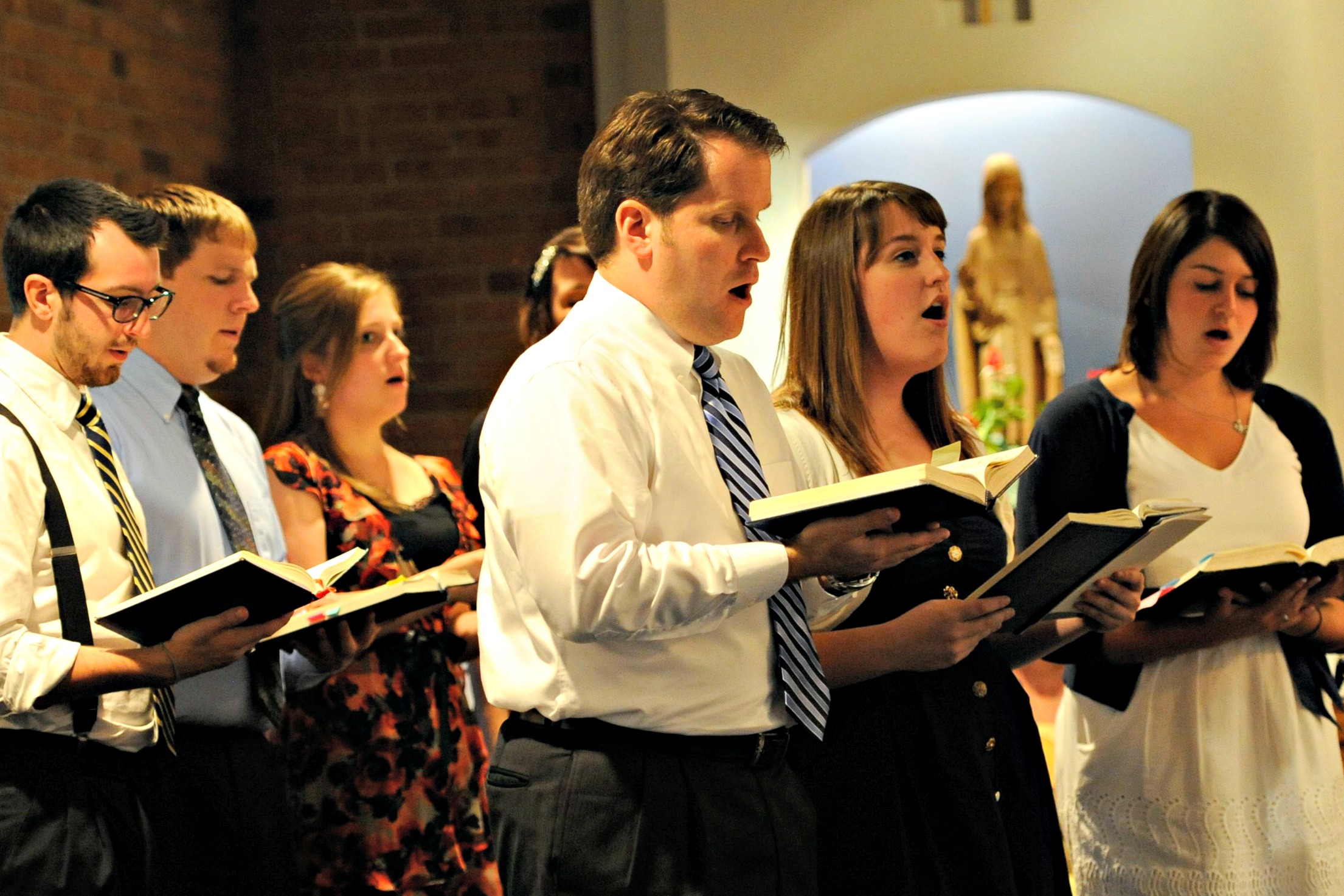As the Church enters into its yearly observance of Holy Week, liturgical musicians throughout the world anticipate the fruition of months of preparation and prayer. Every year, the liturgies of Holy Week, and especially of the Sacred Paschal Triduum, place a joyous burden on those involved in liturgical music ministry as they lead congregations in singing the mysteries that lie at the heart of the Christian faith, and in praising God for what has been accomplished in Christ.
In a word, the music of Holy Week is saturated. The imagery of the texts and chants found within the Roman Missal is rife with Scriptural resonances from both the Old and the New Testaments, a beautiful example of the “true divine pedagogy” wherein the “New Testament [is] hidden in the Old and the Old [is] made manifest in the New” (Dei Verbum, §§15, 16). In the texts we sing throughout Holy Week, and especially those sung at the Easter Vigil, we sing of salvation history, tracing the marvelous work of God from the creation of the cosmos to the liberation of Israel, to the gathering of the remnant and the wisdom of the prophets, to the culmination of history itself in the Paschal mystery—the Passion, Death, and Resurrection of Jesus Christ, the Incarnate Word, the Son of God.
And yet, when we sing this music, or when we listen to others sing it, we are not merely singing about the Paschal mystery as though it were a one-time event that took place two thousand years ago, for the liturgy is not merely a recollection of past events concerning Jesus of Nazareth. Rather, as the Catechism makes clear, “Christian liturgy not only recalls the events that saved us but actualizes them, makes them present” (§1104). When we celebrate the liturgy, the Paschal mystery is made present, and we are caught up in the saving actions of Christ—the sacrifice of himself, offered in love “once for all” (Heb 10:10) on the Cross. Liturgical music and liturgical singing, then, become essential means by which we immerse ourselves into the Paschal mystery of Christ.
In the first chapter of her book The Ministry of Music, Kathleen Harmon describes two central ways in which music in general and singing in particular facilitate a deeper entry into the Paschal mystery within the celebration of the liturgy. The first of these ways has to do with the very nature of music itself, which Harmon describes as “a constantly renewing cycle of death and resurrection,” as she writes:
The instant a tone is sounded it must begin to die so that the next tone may be born. This means that every musical line is a flow of organically related “dyings” and “risings.”[1]
Theologian and musician Jeremy Begbie similarly describes this inherent quality of music in his book Theology, Music, and Time: “Musical continuity depends to a very high degree on transience, on the coming into being and dying of tones.”[2] Were this not the case—if every note ever sounded “lived” forever and never “died” or decayed into silence, there could be no music. There would only be cacophony and noise. Moreover, as Harmon continues, “the dyings and risings move toward some musical conclusion, some point of final resolution. . . . there is a meaning to this on-going cycle of dying and rising. It is not random but purposeful.”[3] Thus, it is necessary that each musical note undergo death, so that the melody, rhythm, and harmony may continue to rise in each subsequent note until the culmination, the telos, of the piece.
Not only does one see the phenomenon of death and resurrection in music itself, but the acts of singing, speaking, even breathing also become an analogy for the Paschal mystery. In singing, as in speech, one must inhale and then exhale. During exhalation, air passes through the vocal cords, causing them to vibrate, resulting in vocal phonation. Most people have undoubtedly experienced the feeling of running out of breath while attempting to speak or sing extended sentences or phrases; this feeling is a vivid reminder that (at the risk of stating the obvious), if one does not breathe in, one will no longer be able to breathe out. In other words, exhalation constitutes the “dying” part of the cycle, and inhalation the “rising.” The act of breathing is itself our first point of entry into the cycle of dying and rising; the act of singing necessitates that we “release our breath into this purposeful cycle of dying and rising. . . . We latch onto one note only to let it go as our breath moves us on to the next note.”[4] In this way, the cycle of dying and rising in our breathing patterns is mapped on to the cycle of dying and rising present in music itself as we sing; thus the very physicality of our participation in the liturgy in both speech and song reflects the mystery of Christ’s own dying and rising.
The second way in which Harmon views liturgical singing as an entry into the Paschal mystery pertains to the will. She writes:
To join the liturgical assembly in song is to make a choice. The very choice to sing is a revelation of our personal will and intention to engage with the Body of Christ in the ritual enactment of our dying and rising.[5]
Not only that, but the choice to sing can itself be a form of ding and rising, as we give ourselves and our will over to the unfolding liturgical action. Harmon is worth quoting at length here:
The more aware we become of liturgical singing as participation in the dying and rising mystery which the liturgy enacts, the more readily we can allow our singing to facilitate our surrender to this mystery. We will sing, then, not just because we enjoy this particular hymn or this particular setting of the Mass, but because we want to enter with the assembled Church into this dying and rising mystery which marks our identity. Then our communal singing will become a revelation not only of the beauty of the music itself, or of the musical capability of this particular community, but of something far deeper: the transformation of this community into the dying and rising Body of Christ.[6]
During the liturgies of Holy Week, we focus our attention with all the greater intensity on the Paschal mystery of Christ’s dying and rising to new life. Whether the music of these celebrations is of exceptional or mediocre or even poor quality, it can become a way by which we can enter more willingly into the dying and rising of Christ as we give over our wills, our bodies, our very breath to the praise of God.
![]()
Featured Photo: courtesy of the Institute for Church Life.
[1] Kathleen Harmon, SNDdeND, The Ministry of Music: Singing the Paschal Mystery (Collegeville: Liturgical Press, 2004), 3.
[2] Jeremy S. Begbie, Theology, Music, and Time (Cambridge: Cambridge University Press, 2003), 61.
[3] Harmon, The Ministry of Music, 3.
[4] Ibid.
[5] Ibid., 5.
[6] Ibid.



